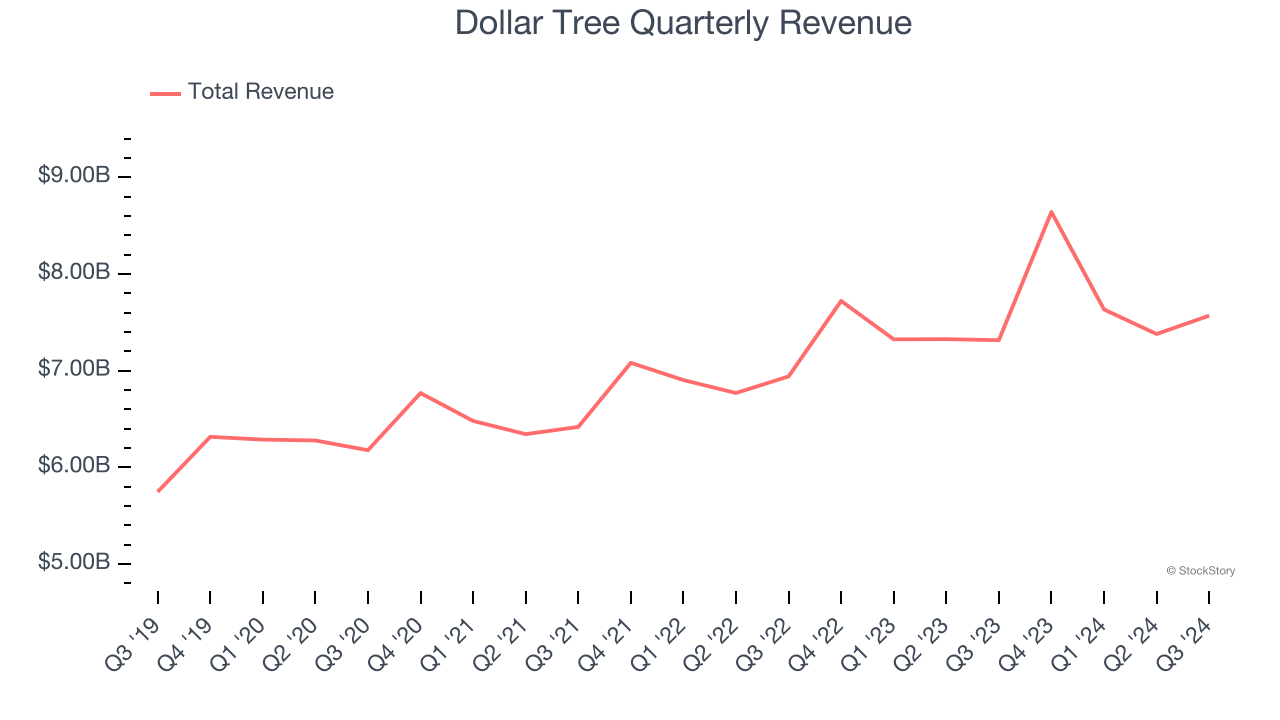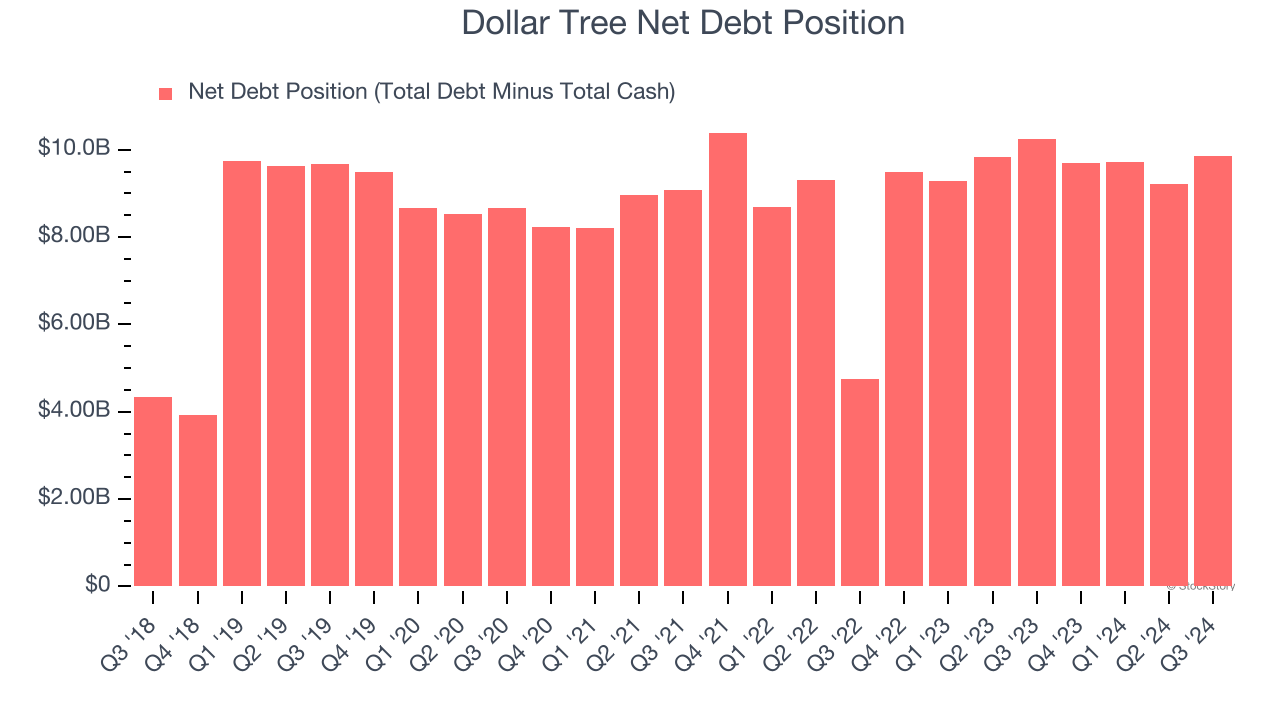
Shareholders of Dollar Tree would probably like to forget the past six months even happened. The stock dropped 32.7% and now trades at $70.56. This may have investors wondering how to approach the situation.
Is there a buying opportunity in Dollar Tree, or does it present a risk to your portfolio? See what our analysts have to say in our full research report, it’s free.
Even with the cheaper entry price, we don't have much confidence in Dollar Tree. Here are three reasons why you should be careful with DLTR and a stock we'd rather own.
Why Is Dollar Tree Not Exciting?
A treasure hunt because there’s no guarantee of consistent product selection, Dollar Tree (NASDAQ: DLTR) is a discount retailer that sells general merchandise and select packaged food at extremely low prices.
1. Long-Term Revenue Growth Disappoints
Examining a company’s long-term performance can provide clues about its quality. Any business can put up a good quarter or two, but the best consistently grow over the long haul. Unfortunately, Dollar Tree’s 5.8% annualized revenue growth over the last five years was tepid. This fell short of our benchmark for the consumer retail sector. 
2. Previous Growth Initiatives Haven’t Paid Off Yet
Growth gives us insight into a company’s long-term potential, but how capital-efficient was that growth? Enter ROIC, a metric showing how much operating profit a company generates relative to the money it has raised (debt and equity).
Dollar Tree historically did a mediocre job investing in profitable growth initiatives. Its five-year average ROIC was 9.7%, somewhat low compared to the best consumer retail companies that consistently pump out 25%+.
3. High Debt Levels Increase Risk
Debt is a tool that can boost company returns but presents risks if used irresponsibly. As long-term investors, we aim to avoid companies taking excessive advantage of this instrument because it could lead to insolvency.
Dollar Tree’s $10.55 billion of debt exceeds the $697.6 million of cash on its balance sheet. Furthermore, its 5× net-debt-to-EBITDA ratio (based on its EBITDA of $1.91 billion over the last 12 months) shows the company is overleveraged.

At this level of debt, incremental borrowing becomes increasingly expensive and credit agencies could downgrade the company’s rating if profitability falls. Dollar Tree could also be backed into a corner if the market turns unexpectedly – a situation we seek to avoid as investors in high-quality companies.
We hope Dollar Tree can improve its balance sheet and remain cautious until it increases its profitability or pays down its debt.
Final Judgment
Dollar Tree’s business quality ultimately falls short of our standards. Following the recent decline, the stock trades at 12× forward price-to-earnings (or $70.56 per share). While this valuation is reasonable, we don’t really see a big opportunity at the moment. We're fairly confident there are better stocks to buy right now. We’d suggest looking at Costco, one of Charlie Munger’s all-time favorite businesses.
Stocks We Like More Than Dollar Tree
The Trump trade may have passed, but rates are still dropping and inflation is still cooling. Opportunities are ripe for those ready to act - and we’re here to help you pick them.
Get started by checking out our Top 5 Strong Momentum Stocks for this week. This is a curated list of our High Quality stocks that have generated a market-beating return of 175% over the last five years.
Stocks that made our list in 2019 include now familiar names such as Nvidia (+2,183% between December 2019 and December 2024) as well as under-the-radar businesses like Sterling Infrastructure (+1,096% five-year return). Find your next big winner with StockStory today for free.






